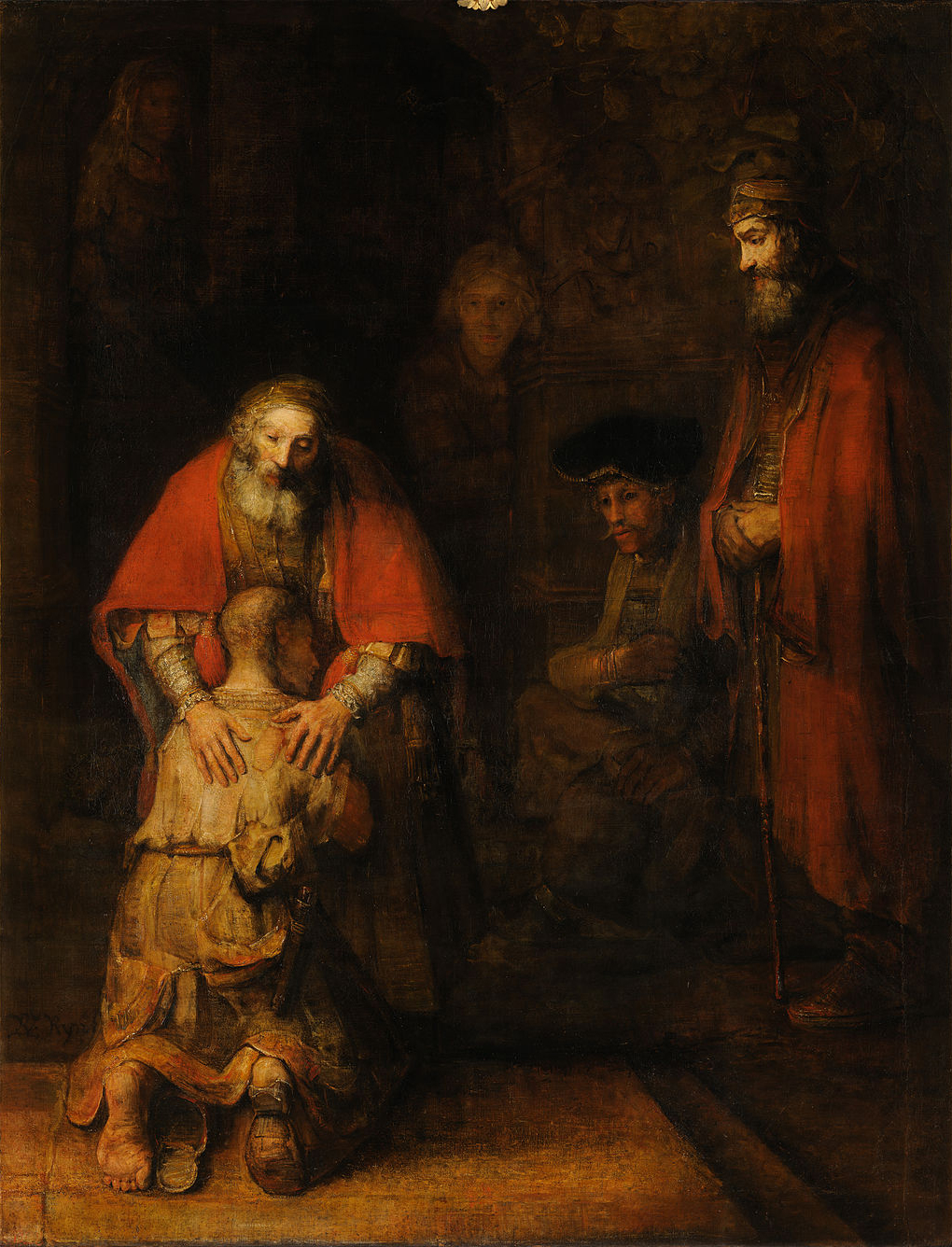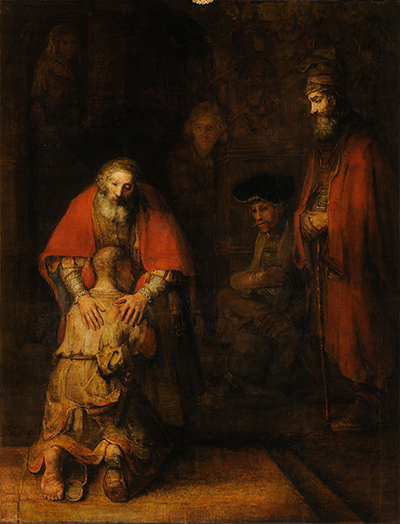The Biblical parable of the Prodigal Son had a significant influence on Rembrandt as he completed various works based on the story.
There are two other paintings of a similar theme: The Prodigal Son in the Tavern (1635) and The Prodigal Son in the Brothel (1635) as well as some drawings and etches.
The Parable of the Prodigal Son has been represented numerous times by various artists throughout history. The story is one that can still hold much significance today. It is a story told by Jesus in the book of Luke about a father and his two sons.
The younger son asks for his share of his inheritance and then proceeds to leave his home, wasting his wealth and becoming destitute.
The younger son returns home essentially as a beggar and hopes his father will let him be a servant in his former household as he believes their relationship is broken.
However, the father welcomes his younger son back and celebrates his return as he recognizes how his youngest son has experienced his own redemption story. The older son refuses to celebrate his brother's return; however, the father encourages celebration as he saw his younger son lose himself and, upon his return home, find himself.
Rembrandt's interpretation of this parable in the painting The Return of the Prodigal Son received praise at the time of it's creation and continues to be admired today.
The painting is full of emotion and truly demonstrates the father's forgiveness of his younger son. The destitution of the son is evident in his filthy and ragged clothing as well as his dirty skin. This state of destitution is in direct contrast to the lavishness and cleanliness of the father's clothing, as well as those of the other figures.
The father has a sincere and tender look on his face and his soft, loving embrace of his son can be felt. The identities of the other figures are not exactly known but art historians throughout the years have come to similar conclusions. The standing figure on the right is believed to be the older son who has a possible resentful look on his face, in accordance with the parable.
The seated figure in the middle is believed to be an advisor of sorts as his clothing suggests wealth. The figure in the shadows in the background is believed to be the mother.
Since this was one of Rembrandt's last paintings, many interpreters believe it reveals the artists final message to the world. This message is one of mercy, sympathy, forgiveness and tenderness, which would have been lacking in a time of religious strife. This painting has survived centuries and still has as much feeling and significance today. The Return of the Prodigal Son is currently held in The Hermitage Museum in St Petersburg, Russia.

Rembrandt van Rijn (1606-1669) - most commonly referred to simply as Rembrandt - was a famous Dutch painter in the 17th century. He is considered one of the greatest visual artists of all time for mastering painting, draughtsman and printmaking skills.
Rembrandt often painted portraits, self-portraits and scenes from the Bible.
His portraits were commonly of his contemporaries and his self-portraits helped create a story of his life while demonstrating his humble and sincere nature. His biblical representations showed his knowledge while also providing a glimpse into his compassion for humanity and familiarity with the people of his country.
Despite never having left his home nation, Rembrandt's works became internationally recognized and celebrated.
During the years of Rembrandt's fruitful career, there was religious strife in the Netherlands.
There was much persecution between the established Catholic Church and the reformed Protestant churches. Even within his own family there was contradiction: his mother was Roman Catholic and his father belonged to the Dutch Reformed Church.
Nevertheless, many of Rembrandt's paintings reveal a possible Christian faith. This is no exception to his painting The Return of the Prodigal Son. Completed circa 1669, it was one of his last paintings as he passed away in the same year.




